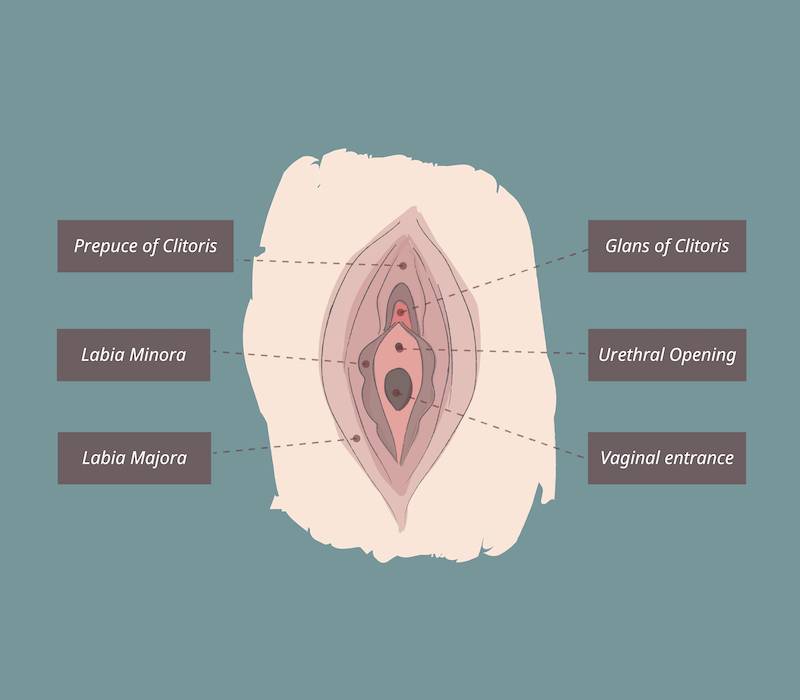For any patient going under the knife, one of their main concerns is the risk of surgery going wrong and the outcome not being in line with their desired results. This often means a second corrective surgery and the additional recovery time and cost that comes with it.
As such, in this article, we will discuss how to avoid a botched labiaplasty so you can go into surgery feeling confident and comfortable in your decision.
What is a Botched Labiaplasty?
A labiaplasty, often referred to as labial reduction or vulval surgery, is a cosmetic procedure to reshape and reduce the size of the labia minora, the inner skin of the vaginal folds. Although many women undergo this procedure for aesthetic reasons, this procedure can help to address functional concerns such as discomfort from the excess skin catching and chafing.
Unfortunately, some women report unsatisfactory and sometimes disastrous results from their labiaplasty procedure. This botched surgery can be as a result of too little or too much labia tissue being removed by a surgeon, resulting in an aesthetically inferior result. After this, patients may require further surgeries to correct the mistakes of the original surgery. This can be emotionally, physically, and financially taxing, making it even more important that women know how to best prevent a botched labiaplasty procedure.
Top 3 Tips to Avoid a Botched Labiaplasty
There are three key tips that can help you avoid a botched labiaplasty:
1. Know Your Anatomy
Understanding your body and having realistic expectations of a labiaplasty is central to preventing unsatisfactory results. Many patients may confuse a large clitoral hood for excess labia tissue and, as such, approach a surgeon with the wrong procedure in mind. Furthermore, an inadequately trained surgeon may suggest the incorrect procedure for your needs, and feeling confident in challenging this is essential in preventing a catastrophe.

2. Decide on a Trim or Wedge Procedure
There are two different finishes to a labiaplasty. A trim labiaplasty is ideal for patients who are prioritising aesthetic issues like excess labial tissue and hyperpigmentation. Conversely, a wedge labiaplasty is more suited to patients who want natural tightening and minimal scarring. It’s important to know which type of labiaplasty is best suited to your body goals, and this can be discussed with a qualified surgeon to ensure you are satisfied with the results.
3. Find a Qualified Surgeon
The most important criteria in avoiding a botched labiaplasty is to ensure that you are treated by a qualified surgeon with significant experience conducting specialist labiaplasty surgery. When vetting a potential surgeon, ensure they have the following:
Credentials
The first thing to check in order to avoid a botched labiaplasty is the credentials the surgeon has. You can check the registration status of a surgeon through the General Medical Council, where their date of qualification and specialism is publicly accessible.
Some patients are under the impression that any OB-GYN’s have the training necessary to perform labiaplasty, but some may lack the skills to perform such aesthetic surgery. Therefore, It’s important to ensure that your surgeon is specialised and trained in this surgery, as this is what will differentiate them from other unqualified doctors.
Experience
Many cosmetic surgeons may not have performed labiaplasty regularly despite their qualifications and licence to do so. It is therefore important to ensure that your surgeon has both the qualifications as well as a significant amount of experience conducting this highly specialised procedure in order to avoid botched labiaplasty results.
Proven Results
Finally, to avoid a botched labiaplasty, you should ensure your surgeon has clearly demonstrated their competence. This can be cross-referenced by browsing reviews by their labiaplasty patients on platforms such as Realself and looking at before and after photos to see the final results the surgeon was able to achieve.
Is Labiaplasty Worth It?
Many women wish to address the aesthetic and functional issues they experience as a result of excess labial tissue. This can cause both emotional and physical distress, preventing women from feeling comfortable wearing tight clothing and being sexually active. As such, women who have rectified these issues by undergoing a labiaplasty believe it to be a worthwhile procedure.
Schedule a Consultation with CREO Clinic Today
We understand that patients may feel apprehensive about seeking an intimate procedure like a labiaplasty with a male surgeon. Because of this, at the CREO Clinic, we are founded on an ethos of strict confidentiality and offer chaperoning services to ensure patients feel as comfortable as possible throughout their time with us.
Our cosmetic surgeon, Dr Omar Tillo, has both the necessary clinical expertise and a plethora of experience conducting delicate, individualised labiaplasty procedures, and we believe that the bespoke results speak for themselves.
Contact us today to book your consultation with Dr Tillo and ensure a safe and worry-free treatment to address your individual needs.







